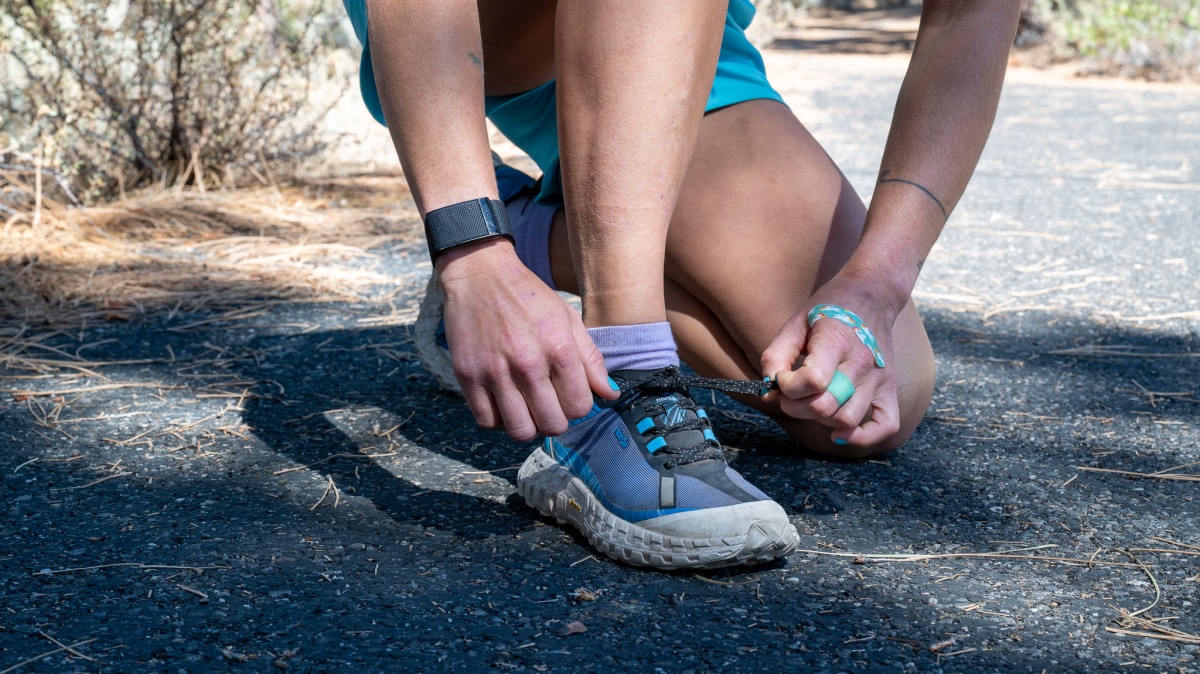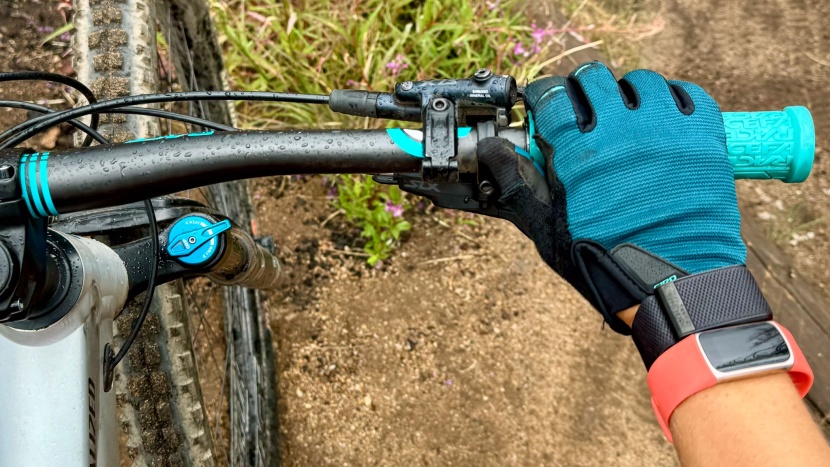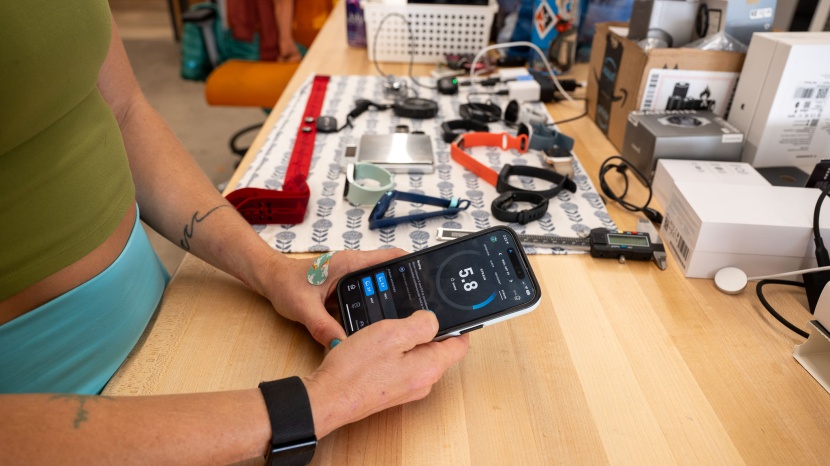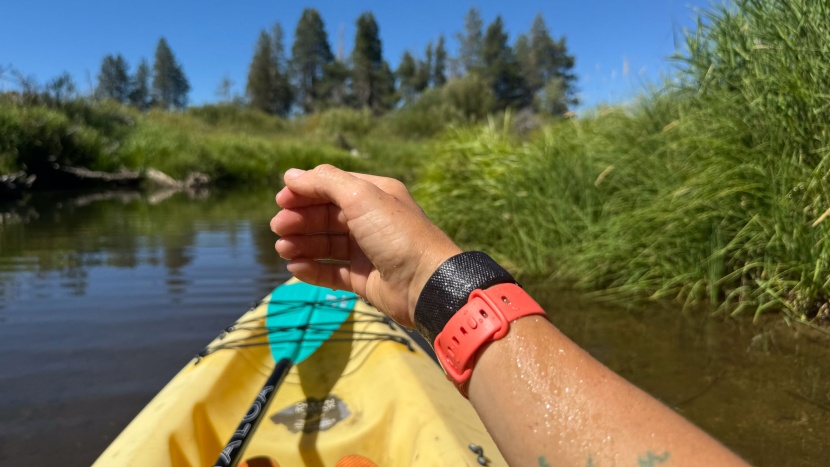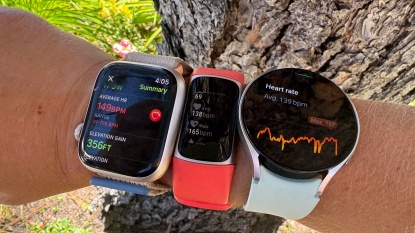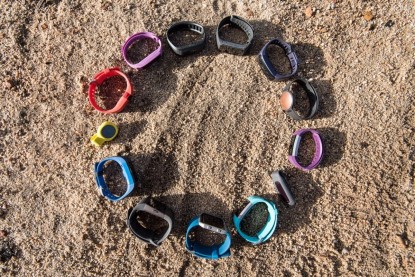Our Verdict
Compare to Similar Products
 This Product Whoop 4.0 | |||||
|---|---|---|---|---|---|
| Awards | Top Pick for Minimalist Lifestyle Tracking | Best Value for Athletes | Best on a Tight Budget | ||
| Price | $239 List $239.00 at Amazon | $300 List $243.99 at Amazon | $50 List $39.99 at Amazon | $100 List $99.70 at Amazon | $50 List $45.45 at Amazon |
Overall Score  |
|||||
| Star Rating | |||||
| Bottom Line | An innovative device that integrates fitness tracking and lifestyle tracking while also being low-profile | An excellent fitness tracker for athletes at an affordable price | The device offers a lot of function and value, although it has some limitations related to heart rate monitoring and health tracking | We recommend this product if you're looking for an affordable and lightweight fitness tracker that offers excellent fitness features | This device has an intuitive interface, great step counting, and good battery performance, but it is limited as a fitness tracker, and we found the standard band annoying |
| Rating Categories | Whoop 4.0 | Garmin Vivoactive 5 | Amazfit Band 7 | Fitbit Inspire 3 | Xiaomi Band 8 |
| Fitness Impact (30%) | |||||
| Health Impact (30%) | |||||
| Ease of Use (20%) | |||||
| Battery (10%) | |||||
| Fit (10%) | |||||
| Specifications | Whoop 4.0 | Garmin Vivoactive 5 | Amazfit Band 7 | Fitbit Inspire 3 | Xiaomi Band 8 |
| Measured Weight | 1.03 oz | 1.26 oz | 1 oz | .68 oz | .90 oz |
| Measured Display Diameter | 28.0 mm | 38.0 mm | 21.9 mm | 14.6 mm | 20.4 mm |
| Heart Rate Average Beats Per Second Off | 11.2 | 4.4 | 15.9 | 6.4 | 4.5 |
| Manufacturer Stated Battery Life | 4-5 days dependent on usage | Up to 11 days 5 days display always-on |
Heavy Usage: 12 Days Typical Usage: 18 Days Battery Saver Mode: 28 Days |
Up to 10 days | 16 days with typical usage 6 days in AOD mode |
| Built-In GPS Tracking | No | Yes | No | No | No |
| Screen Type | na | AMOLED | AMOLED | AMOLED | AMOLED |
| Measured Charge Time | 2.5 Hours | 1.70 Hours | 1.75 Hours | 1.25 Hours | 0.90 Hours |
| Heart Rate Monitor | Yes | Yes | Yes | Yes | Yes |
| Sleep Tracking | Yes | Yes | Yes | Yes | Yes |
| Altimeter (Elevation Tracking) | No | No | No | No | No |
| Did a single charge survive a 3 day weekend? | Yes | Yes | Yes | Yes | Yes |
| Sensors | 5 LEDs and 4 photodiodes | GPS, Glonass, Garmin Elevate Wrist Heart Rate Monitor, Pulse Ox Blood Oxygen Saturation Monitor, Compass, Accelerometer, Thermometer, Ambient Light Sensor | BioTracker™ 3.0 PPG biometric sensor (supports blood-oxygen, 1PD + 2LED), 3-Axis acceleration sensor, geomagnetic sensor |
3-Axis accelerometer, optical heart rate monitor, red and infrared sensors for blood oxygen (SpO2) monitoring, ambient light sensor | High precision 6-axis senser PPG heart rate sensor Ambient light sensor |
| Memory | Up to 14 days (without syncing to phone) | 4 GB | Not mentioned | Saves 7 days of detailed motion data, minute by minute, Saves daily totals for the last 30 days, Stores heart rate data at one-second intervals during exercise tracking and at five-second intervals all other times | 100 GB |
| Connectivity | Apple iOS 16 or higher iPhone 6s or higher Android OS 10.0 or higher |
Bluetooth®, ANT+®, Wi-Fi® | Android 7.0 and above, iOS 12.0 and above | Apple iOS 15 or higher. Android OS 10 or higher |
Bluetooth 5.1 LE, Compatible with Android 6+ and iOS 12+ |
| Water Resistance | -10m for up to 2 hours (band) -1m for up to 2 hours (with battery pack) |
5 ATM (50m) | 5 ATM (50m) | 5 ATM (50m) | 5 ATM (50m) |
| Notifications | Can function as an alarm but does not give notifications | Text, call, push notifications | Text, call, push notifications | Text, call, push notifications | Text, call, push notifications |
| Alarm Clock Function | Yes | Yes | Yes | Yes | Yes |
| Music Control | No | Yes | Yes | Yes | Yes |
| Color Options? | -28 standard colors plus the option to create your own custom band (how fun!) -can add a custom engraving to any band option (add $25 to price) |
-4 colors | -5 colors | -3 colors | -1 color -3 band styles available in multiple colors for additional cost |
Our Analysis and Test Results
This is the fourth iteration of the Whoop wearable device that was first released in 2015. The characteristic that distinguishes the Whoop from most other fitness or lifestyle trackers is the absence of a screen; all data and analytics are accessed via a smartphone app. The Whoop emphasizes comfort and is intended to blend effortlessly into your daily routine.
Performance Comparison
Fitness Impact
In order to understand how the Whoop affected fitness, we test the accuracy of the GPS, elevation tracking, walking and step tracking, distance precision, cycling tracking, workout tracking, the ability to autodetect walks and runs, and the option for community interaction via the Whoop platform. Overall, the Whoop did fairly well in all of these metrics, but the absence of a built-in GPS and altimeter means that you need to have your smartphone on your person in order to get distance and elevation data.
The Whoop functions more like an extension of your smartphone than a stand-alone fitness tracker, and this was particularly evident when assessing the GPS tracking and elevation sub-metrics. In short, you have to have your phone with you and running the Whoop app in order to track distance, route, and elevation gain and loss. It also appears that the Whoop obtains elevation data by digitally mapping your route rather than measuring elevation with a barometric altimeter. This certainly works, but it isn't as accurate as direct measurements. Our lead tester is an avid climber and was particularly interested in finding a tracker that can track her vertical ascent, but this isn't a feature that the Whoop provides.
Community
Whoop has included rich integration with an online community, and there are a variety of fitness and lifestyle challenges that users can take advantage of. There is also an option for creating your own challenges and tracking behaviors in a journal. The “Teams” feature focuses on certain data metrics or interests (like lifestyle habits), and you can compare stats with those of other people on the team. In discussions with various people in the fitness community, many have emphasized the value of online engagement with a community, so it seems that Whoop is addressing this with its product.
Walking and Step Score
When we tested the Whoop in September, a step counter was not included with the app. We assume that the accelerometer within the Whoop was collecting the relevant data, but Whoop stated on their website that they had" previously not included step counting, given steps are a poor metric to gauge overall health and cardiovascular fitness." We understand their perspective, but we are nonetheless pleased to see that as of October 10, Whoop users can access step data.
Autodetect Walks/Runs
The Whoop has a threshold of elevated heart rate before it initiates autodetection of a run or walk, but in our tests, it accurately detected a run vs. a walk, and it also auto-detected cycling activities.
Cycling Tracking
When we tested Whoop with cycling, the ride the app showed us heart rate, resting heart rate, heart rate variability, respiratory rate, calories burned, and a map with distance. You can monitor your data in real-time, but you have to have your phone out and unlocked, which we found inconvenient when cycling, just as we did with running or other workouts. Also, the data was fairly limited in terms of depth; Whoop doesn't provide splits or elevation data.
Workout Tracking
Whoop evaluates the workouts and produces a “Strain” value. When contrasted with a “Recovery” value, which is determined by stress and sleep patterns, you get easy-to-understand values that offer a quick check-in on health and fitness. The insight you gain from these metrics can inform you when you have recovered from workouts and are ready for another workout or if you need to modify your approach. Whoop also offers an AI coach that can review your data and offer guidance. While our lead tester felt that “Whoop isn't the best for tracking activities in the moment since you have to pull your phone out to see your heart rate, for example, it's great at providing a different lens for interpreting what works and doesn't work for your body.”
Trackable Activities Available
We were impressed by the Strength Trainer function in the Whoop app, which attempts to quantify the impact of strength training based on inputs such as weight, reps, and sets in addition to heart rate. Most other trackers are just using heart rate as an input, so we like seeing that Whoop is trying to better assess activities that aren't cardio-based. We also liked the fact that the Strength Trainer function offers strength routines from within the app, some of which are promoted by well-known professional athletes. Our lead tester did a deep dive into this feature and reported that "all workouts include a difficulty level, equipment list, and a description that often includes demo videos for each exercise. You can add weight or adjust set numbers before starting the workout. It's quite well done!"
We also loved seeing the variety of activities that you can track with the Whoop. We counted over 121 different activities, which include options such as paddle tennis, rock climbing, dance, stage performance, dedicated parenting, nonsleep deep rest, steam room, and high-stress work. In other words, the Whoop makes it possible to track your body metrics while you are doing almost anything. We feel that Whoop is ahead of the curve by merging fitness tracking and body metric tracking and that it offers a level of personalization that we don't see in many of the other devices in our lineup.
Health Impact
We assessed the overall health impact of the Whoop based on heart rate accuracy, diet tracking, additional health indicators, sleep tracking, general lifestyle tracking, and extended features.
Heart Rate
The Whoop app clearly communicates heart rate data when actively tracking. The only downside, as we have mentioned before, is that you have to look at your smartphone screen while exercising. Sometimes, that is impossible! Otherwise, we like that we can see our heart rate, average heart rate, max heart rate, heart rate zone, and calories burned. In our tests, we determined that the Whoop wasn't accurately recording our max heart rate during some HITT workouts, but overall, it was accurate when compared with our benchmark heart rate monitor.
Diet
Whoop provides a journal for tracking diet intake, although it is not useful for tracking calories or meal planning. It does track trends over time, however, so based on your input values, you can get a clear representation of how you have been eating.
Additional Health Indicators
The Whoop offers many health indicators, such as blood oxygen, skin temperature, stress, menstrual tracking, VO2 Max, a progress bar, training load, and recovery. It doesn't have a standing or inactivity reminder, however, and it also doesn't measure EKG, unlike some of the other fitness trackers in our lineup. In our extensive testing, we really like the Recovery, Strain, and overall sleep-tracking functionality. All of these offer a tremendous amount of insight, and they analyze data from across your fitness and health spectrum to provide guidance.
Extended Features
Recovery tracking pulls data from heart rate variability, resting heart rate, respiratory heart rate, and performance to give an overall score as well as trends over time. In addition, stress monitor shows similar trends based on data from heart rate, heart rate variability, and resting heart rate.
Lifestyle Tracking
We really liked the Whoop's journal feature, which allows the user to record behaviors in a customizable list. Depending upon the behavior, you can enter time, frequency, food servings, or simply register yes/no. If there is a possible correlation between a trend and body metrics, Whoop will generate a notification and offer a suggestion (for example, one of our testers received a suggestion to reduce their caffeine intake!).
Sleep Tracking
Whoop gives the most thorough breakdown of sleep data of all the trackers in our lineup. You can get pretty granular with trends such as time in bed, consistency, restorative sleep, sleep debt, and sleep performance. You can look at trends by week, month, or six months. The journal function pops up every morning to track trends and informs you of any habits that are impacting your sleep. Due to the volume of information, it takes some time to learn to use this feature fully, but we love the depth of information.
Ease of Use
We evaluated how easy it was to set up the Whoop device, the corresponding app, what it is like to wear the Whoop, any connectivity features, subscriptions, and water resistance.
Getting Started
When we first put on the Whoop, we kept staring at our wrists, waiting for something to happen, but this sleek little thing just looked like a black bracelet. Once we figured out that we just needed to do its things so it could help us to do ours, we started to like the Whoop. It took a lot of time, however, to get it set up and assign scores because it required several days to determine our body's baseline and to gather data for analysis.
Phone App
Our lead tester's first impression of the app was that it was a bit jumbled with fluff articles that read more like content from a free health blog than a subscription service. However, once enough tracking data has been gathered (in about seven days), Strain, Sleep Performance, Recovery, and heart rate variability metrics are shown on the home page and you can make a Plan selection to shape the focus of the week. We ultimately found that we could navigate the app quite easily and access a huge amount of data for monitoring processes and seeing patterns. We also like the “Ask Whoop Anything” text box for asking questions and getting quick responses.
Wearability
The Whoop is intended to be primarily forgotten once you have it on your wrist, and for the most part, we didn't notice we were wearing it. However, our lead tester noted that sometimes she needed to adjust it: looser for sleeping but more snug for HIIT workouts. It also occasionally snagged on a backpack strap when she wore it loosely. However, our overall impression is that it plays nicely with sleeves and cuffs, and you will need someone to remind you that it is even there. Whoop also offers a clothing line with special device compartments sewn into the clothing. We didn't test any of their garments, but we love this idea and think it has a lot to offer for athletes and fitness enthusiasts alike.
Display
The display is a moot point since the Whoop doesn't have one! This could be a feature you really like or a dealbreaker since a display also serves as a real-time monitor of heart rate, running pace, and distance. We think there is a lot to be said for the Whoop since it is so minimal and otherwise intended as a 24/7 data recorder, but we also acknowledge that it may not be for everyone.
Connectivity
As far as connectivity, the Whoop does an excellent job of auto-uploading workouts to the app and any connected apps (like Strava, Apple Health, or Garmin Connect). It can function as an alarm, but it doesn't work with notifications like texts or calls, and it doesn't have a wallet function or control music.
Subscriptions
The purchase price of the Whoop included a one-year subscription. Also included was a basic black band, although there are a variety of different bands, as well as clothing with an integrated sensor pocket, available through Whoop. We don't love the idea of a subscription for a fitness tracker, but we acknowledge that Whoop is providing a considerable amount of service through its integrated app. Depending on what you are looking for in a fitness tracker, a subscription may be a feature that works for you.
Water Resistance
The Whoop is rated for swimming, showering, or washing hands. Our lead tester mentioned that it is quite comfortable when wet, and it “just feels like a wet friendship bracelet when you wear it in the water.”
Battery
Whoop has developed a really cool way of charging the device where you don't have to remove it from your wrist. The included battery pack is charged separately, and when the Whoop needs a boost (after about four to five days, depending upon usage), you just slide the battery pack onto the device and continue about your day.
Fit
The Whoop band feels “light and breezy,” according to our lead tester. The material is quite soft against the skin and is the most fade-into-the-background-so-that-you-don't-notice-it tracker in our lineup.
Should You Buy the Whoop 4.0?
If you want a tracker that is extremely comfortable and you will largely forget you are wearing, then the Whoop 4.0 may be exactly what you are looking for. You might also be drawn to the richly featured app and the ability to track a wealth of lifestyle data over time, as well as the ability to connect with others and take advantage of AI coaching. However, if you need to be able to actively monitor your heart rate and pace during runs or training sessions, then there are some better options available.
What Other Fitness Trackers Should You Consider?
If you are on a budget but prioritize comfort and minimalism, we recommend the Fitbit Charge 6. Even though it is fairly inconspicuous, it has a screen and can provide real-time monitoring of health and fitness data. You might also want to look at the Amazfit Band 7, which is available for less than one-third the price of the Charge 6. The Band 7 doesn't offer highly accurate heart rate tracking, but it is comfortable, has a screen, and offers wallet and music control functions. Athletes who need highly accurate heart rate and distance tracking might also want to consider the Garmin Vivoactive 6, which was one of our top-scoring fitness trackers but doesn't require a subscription.


